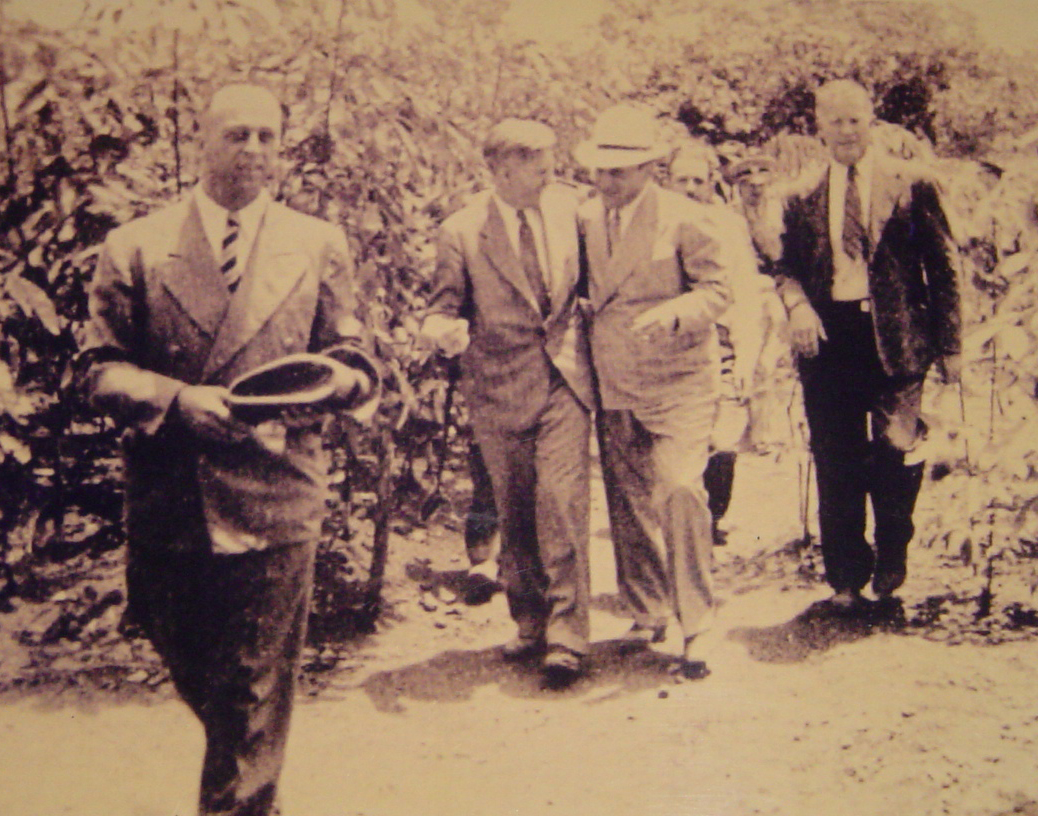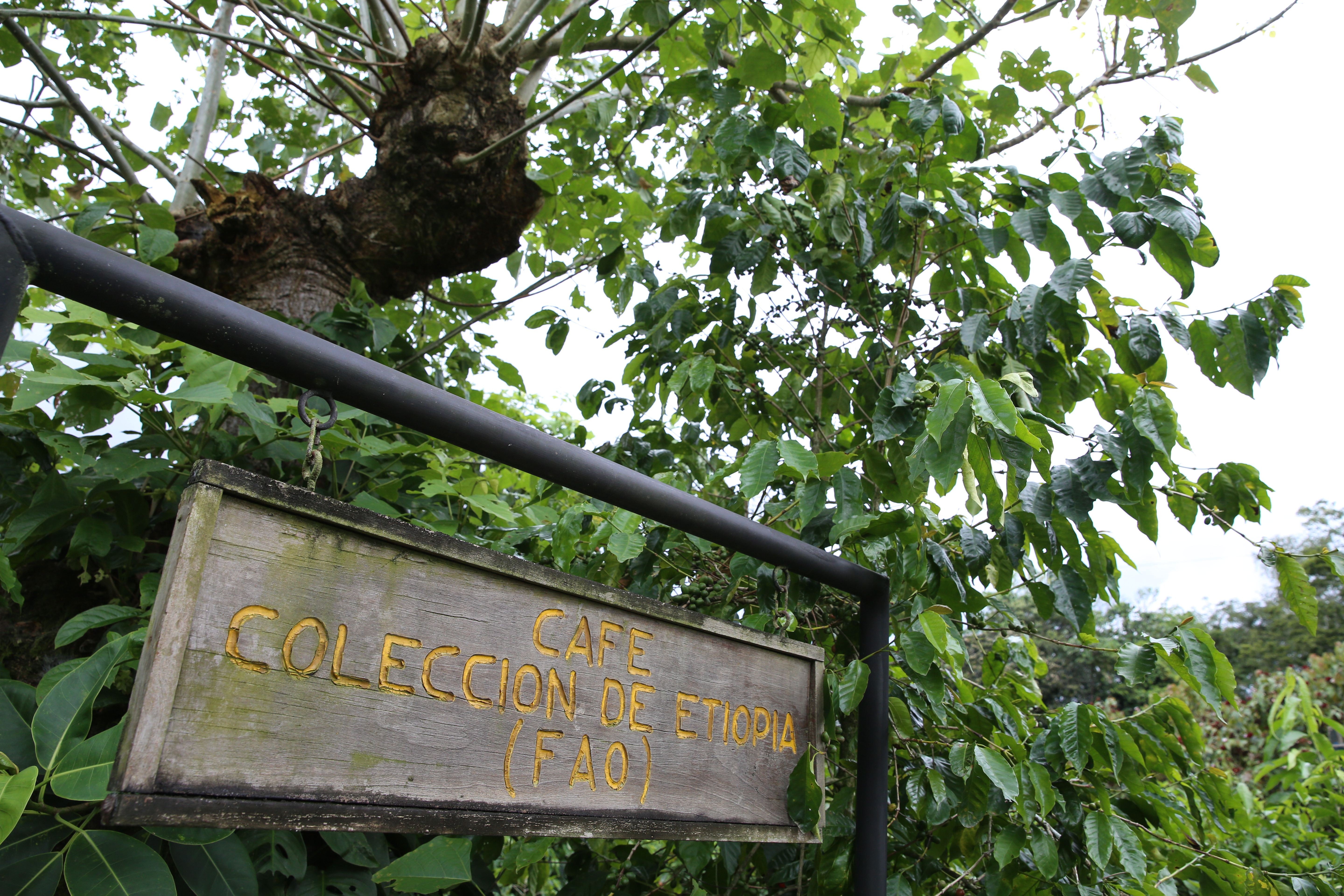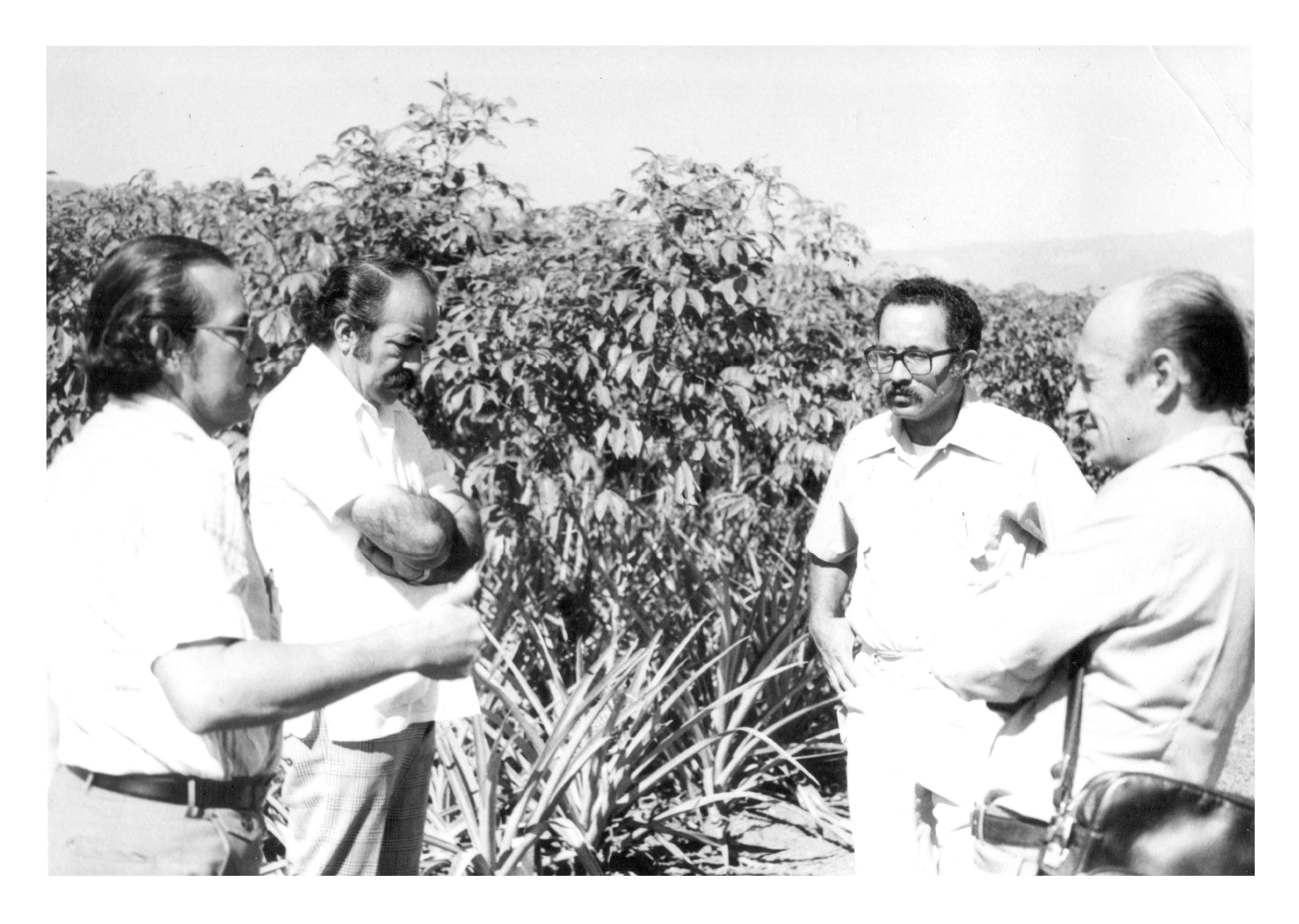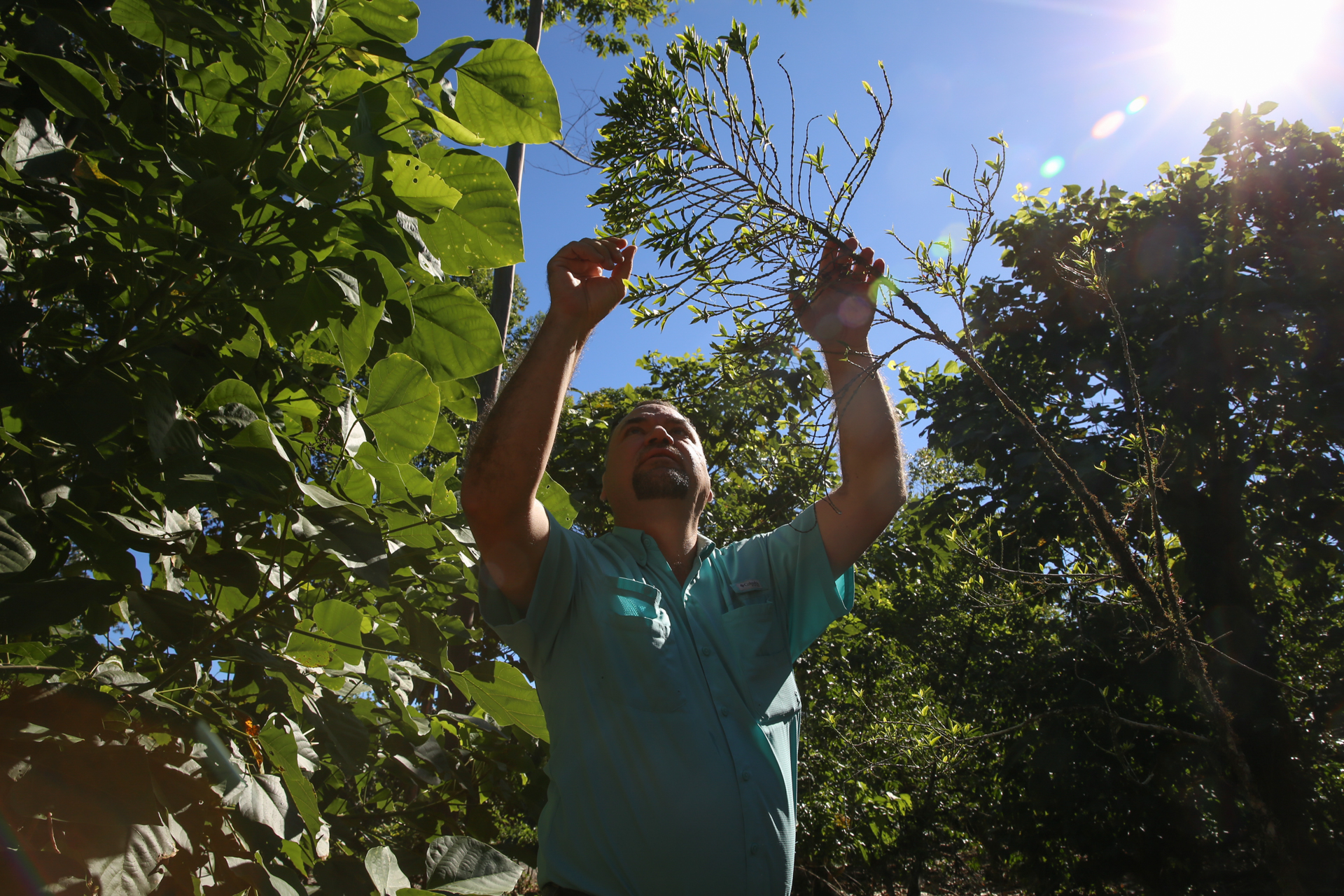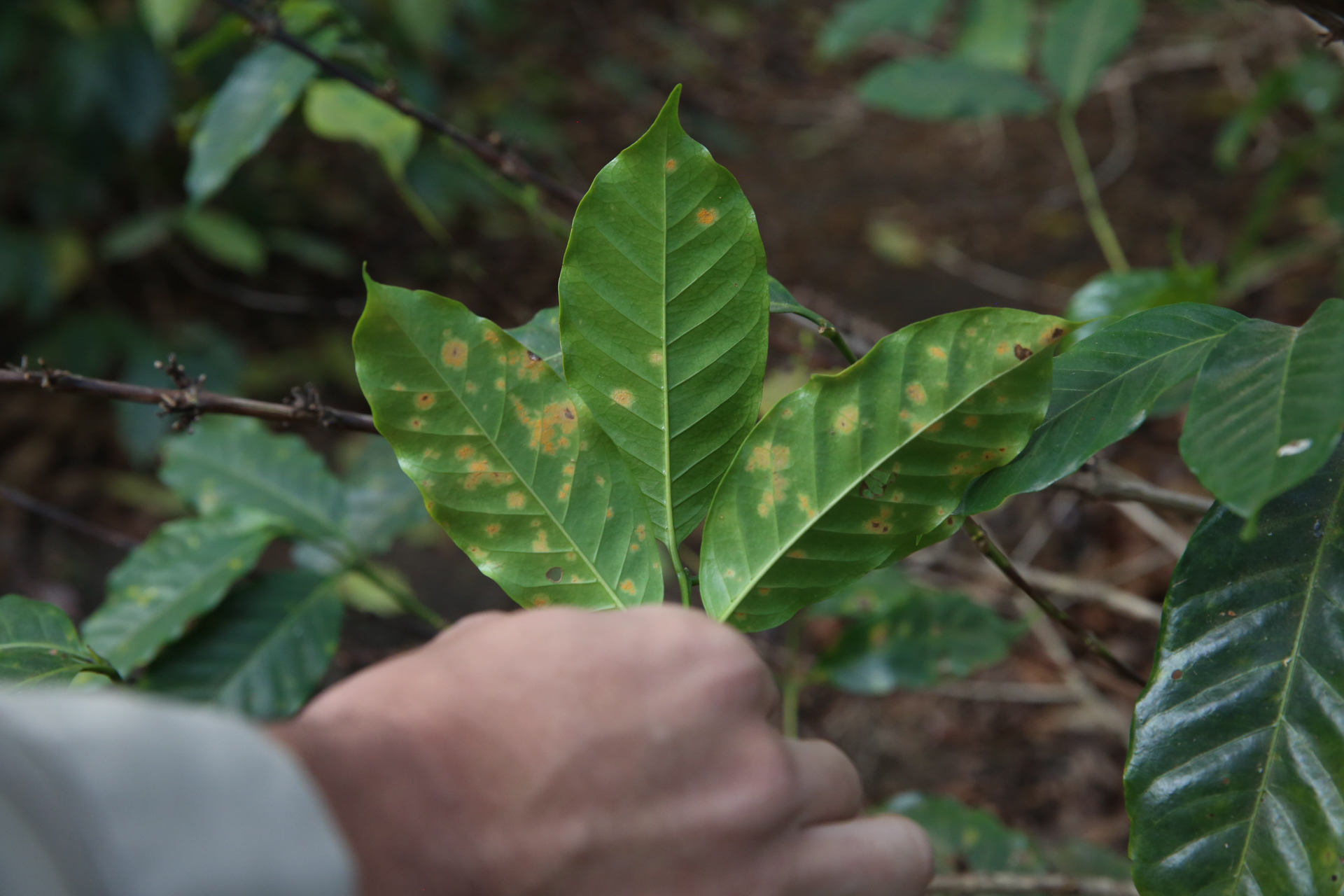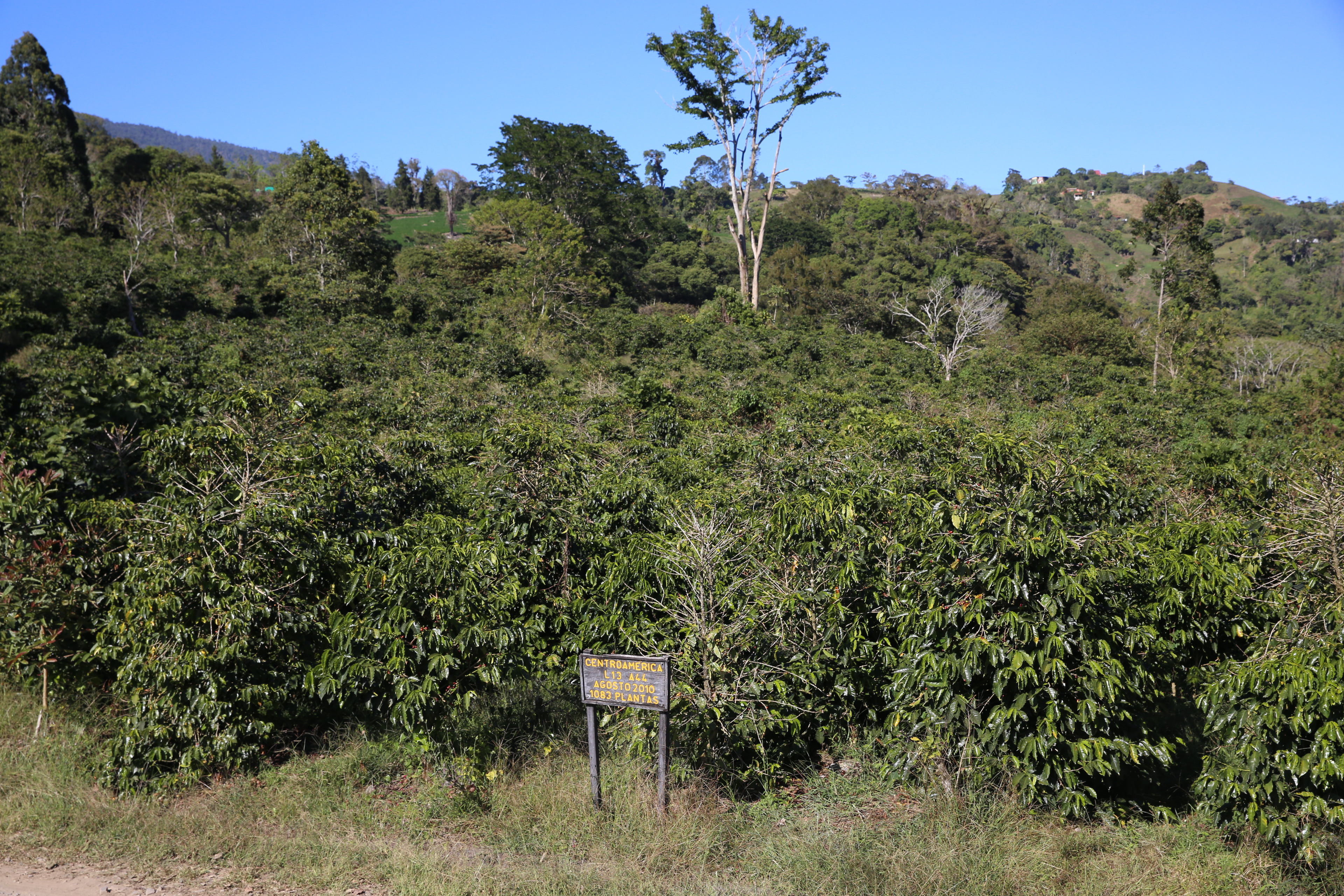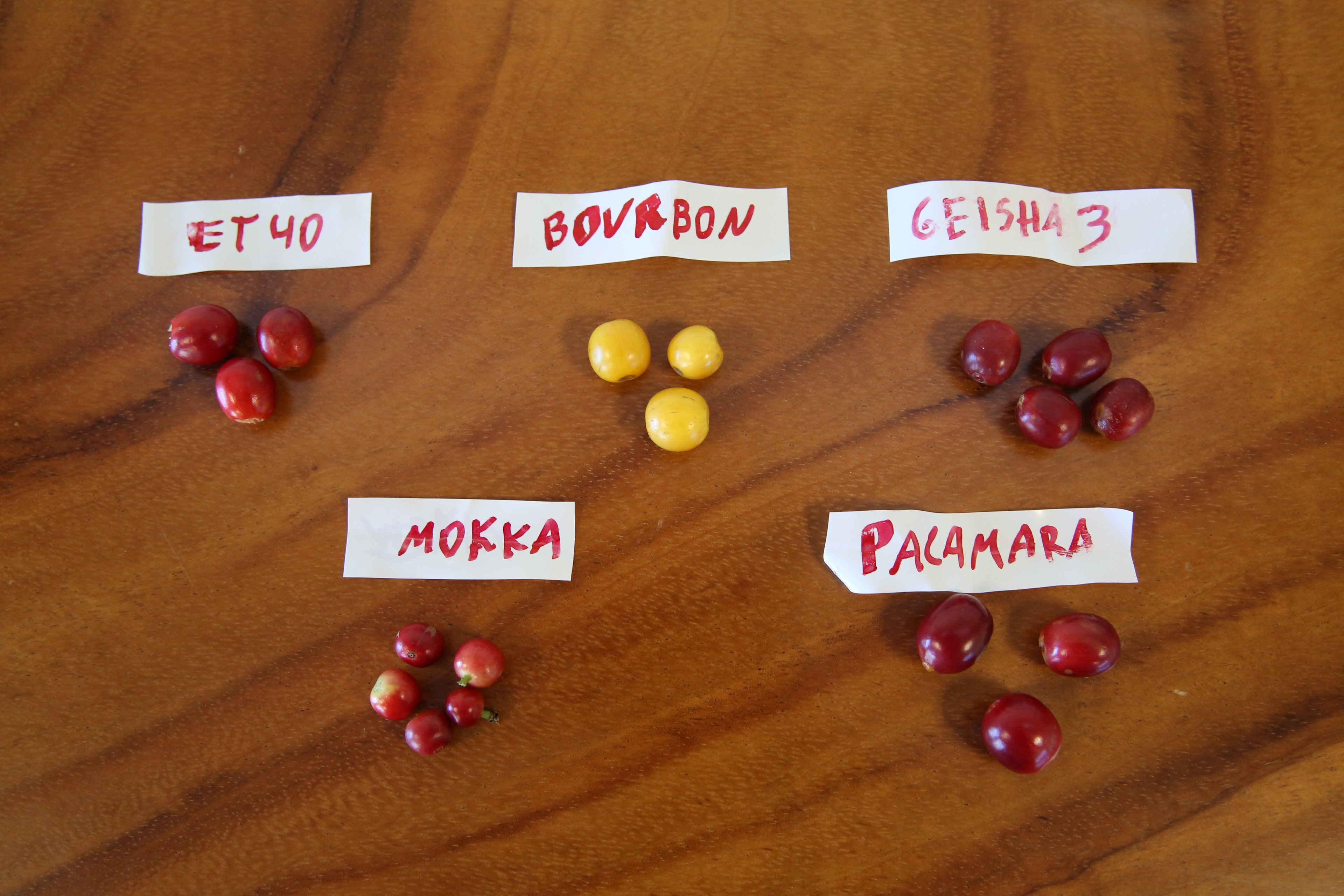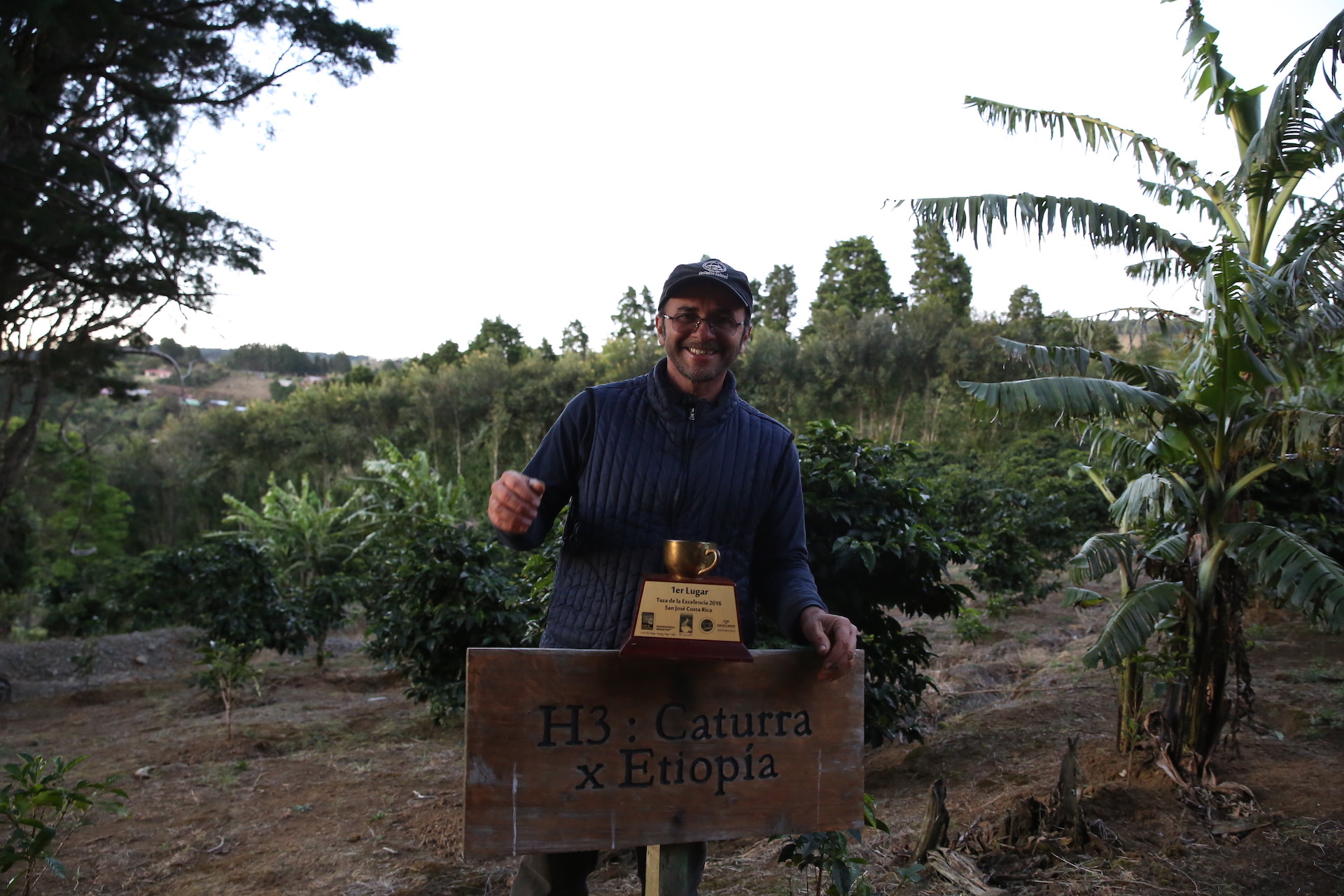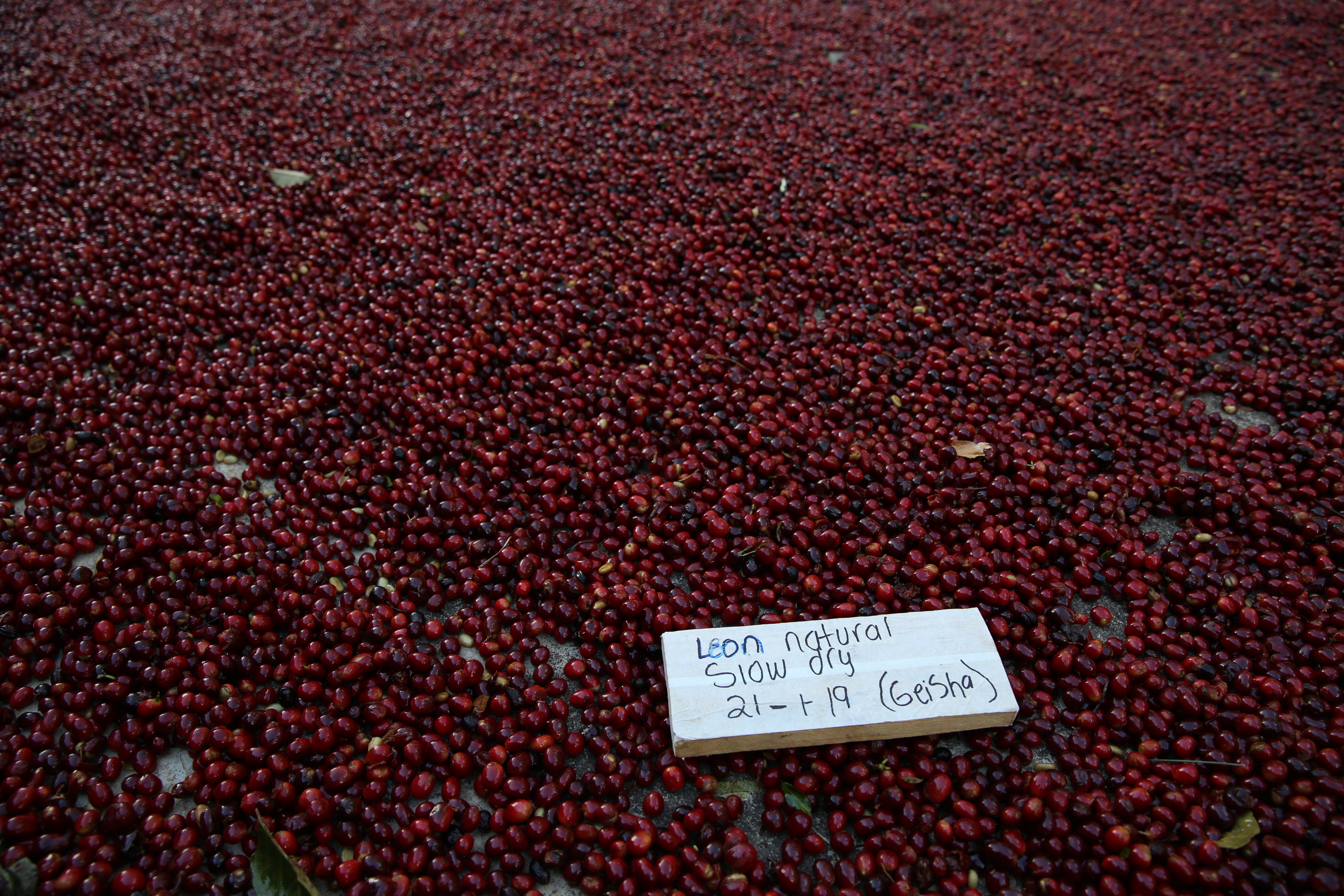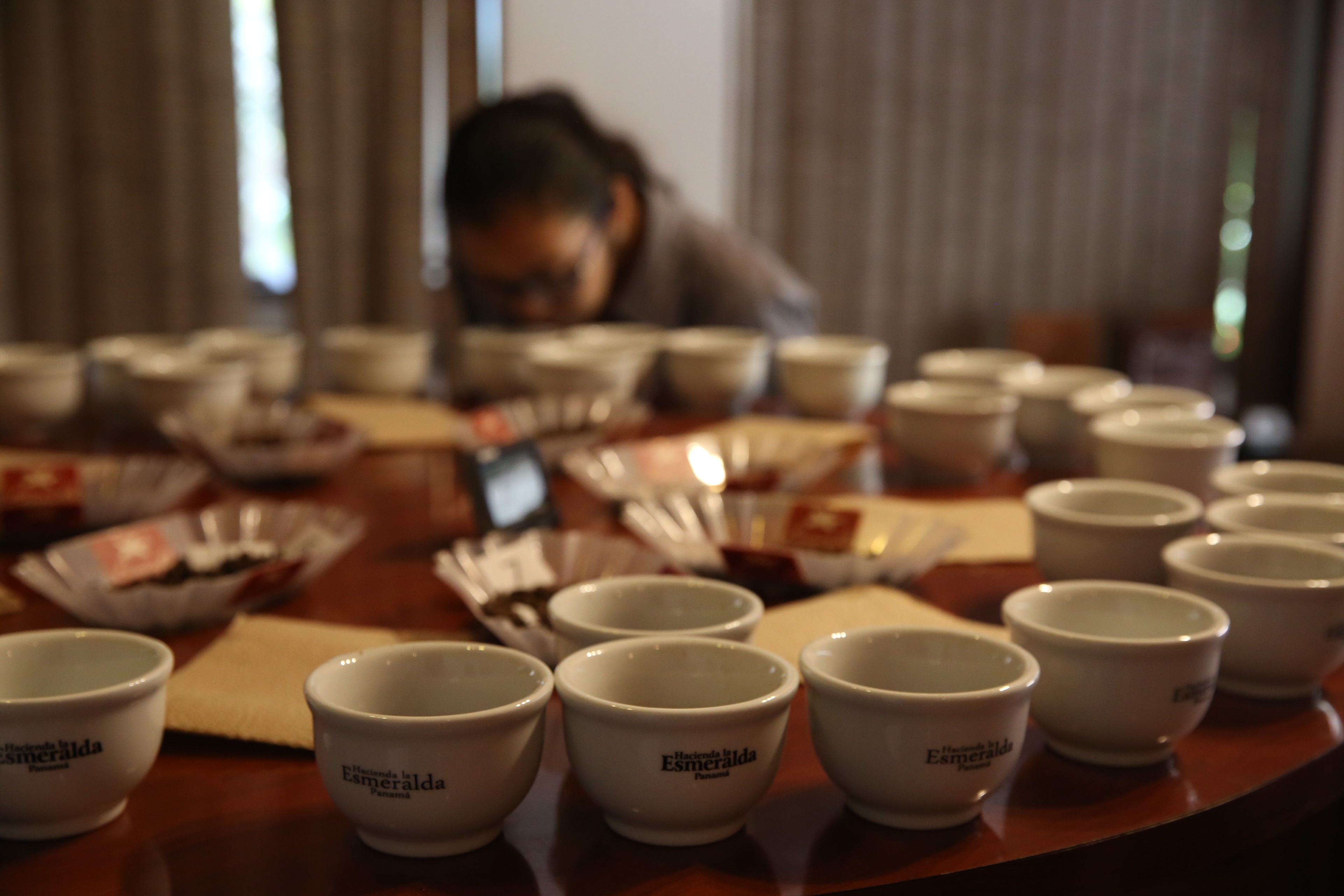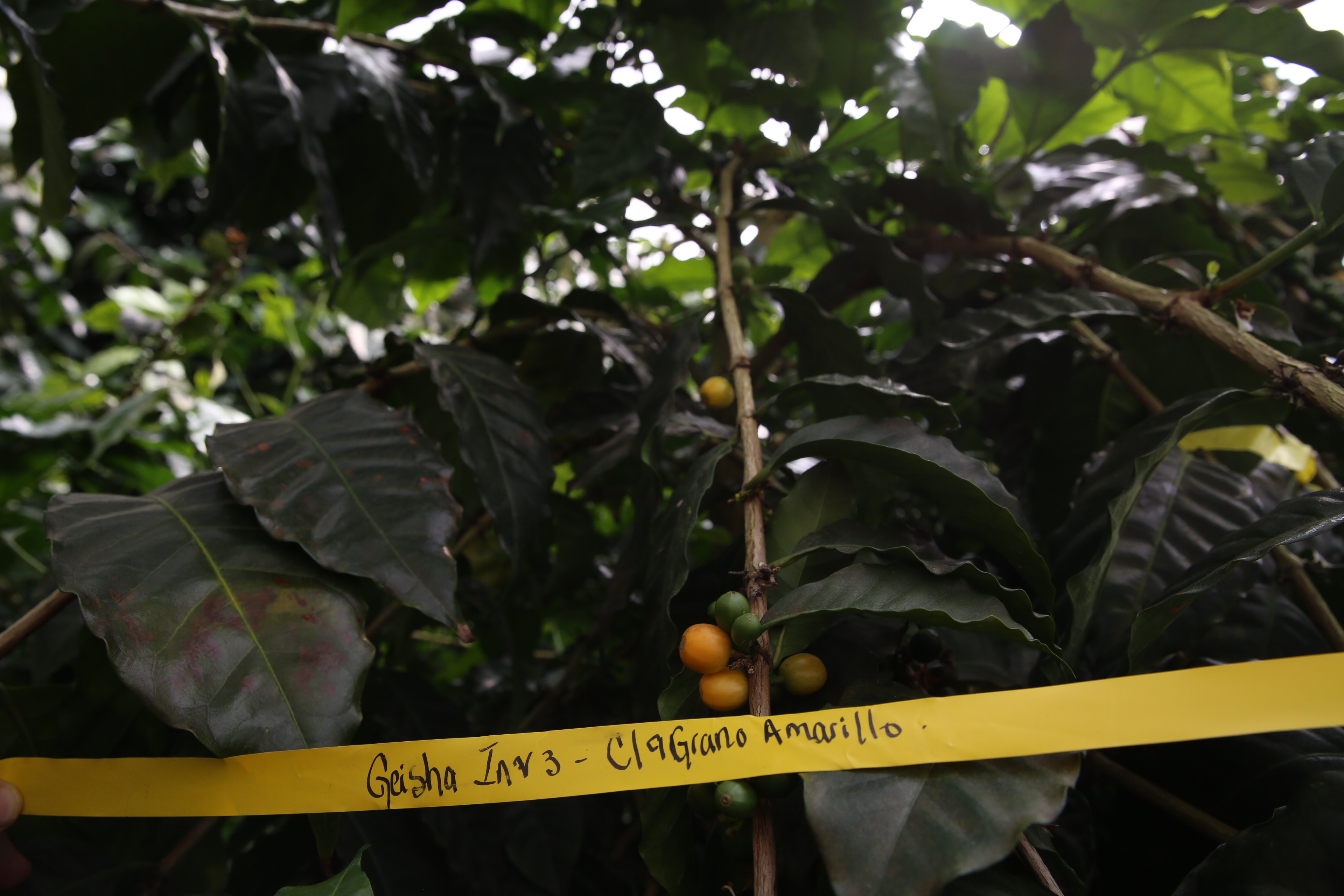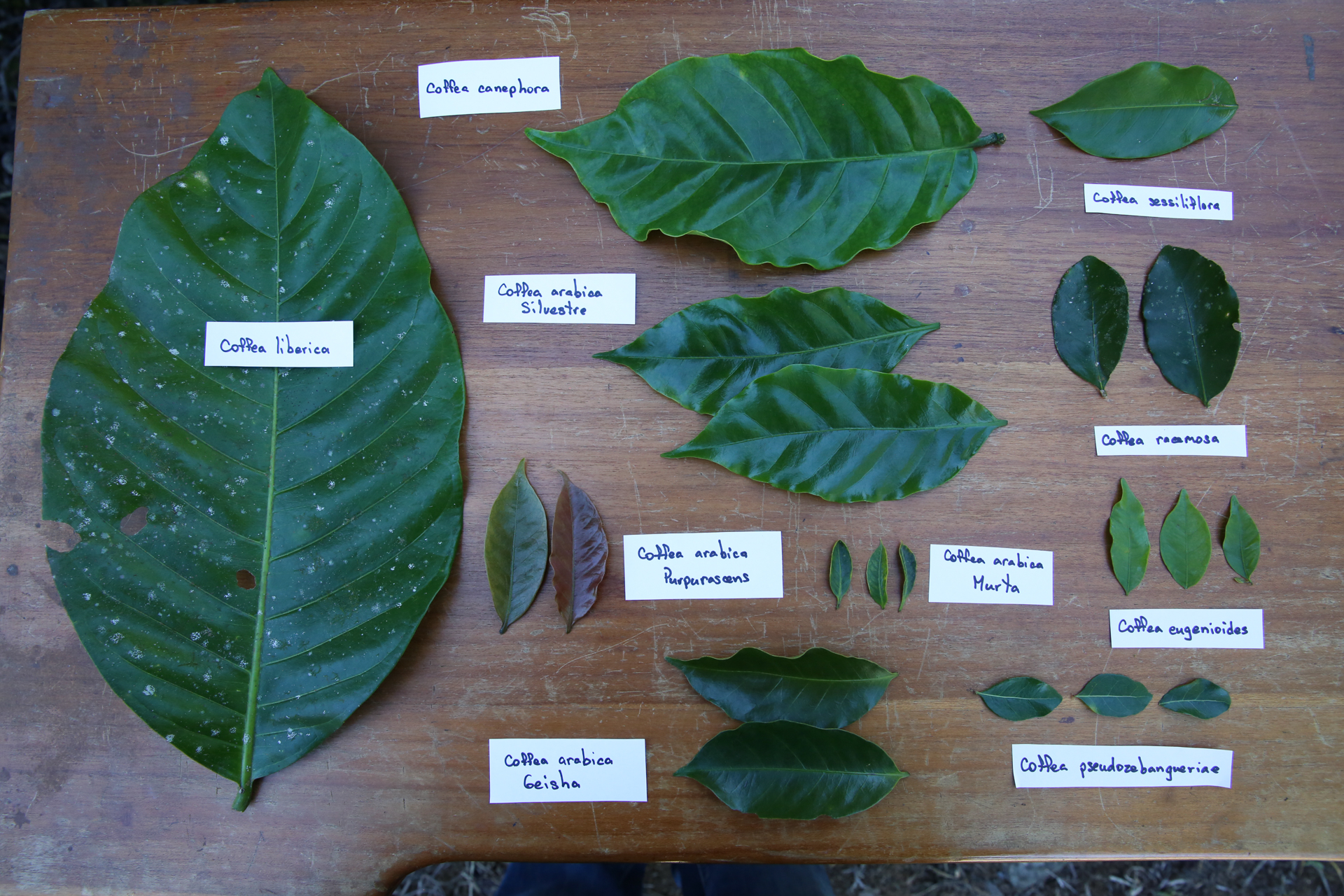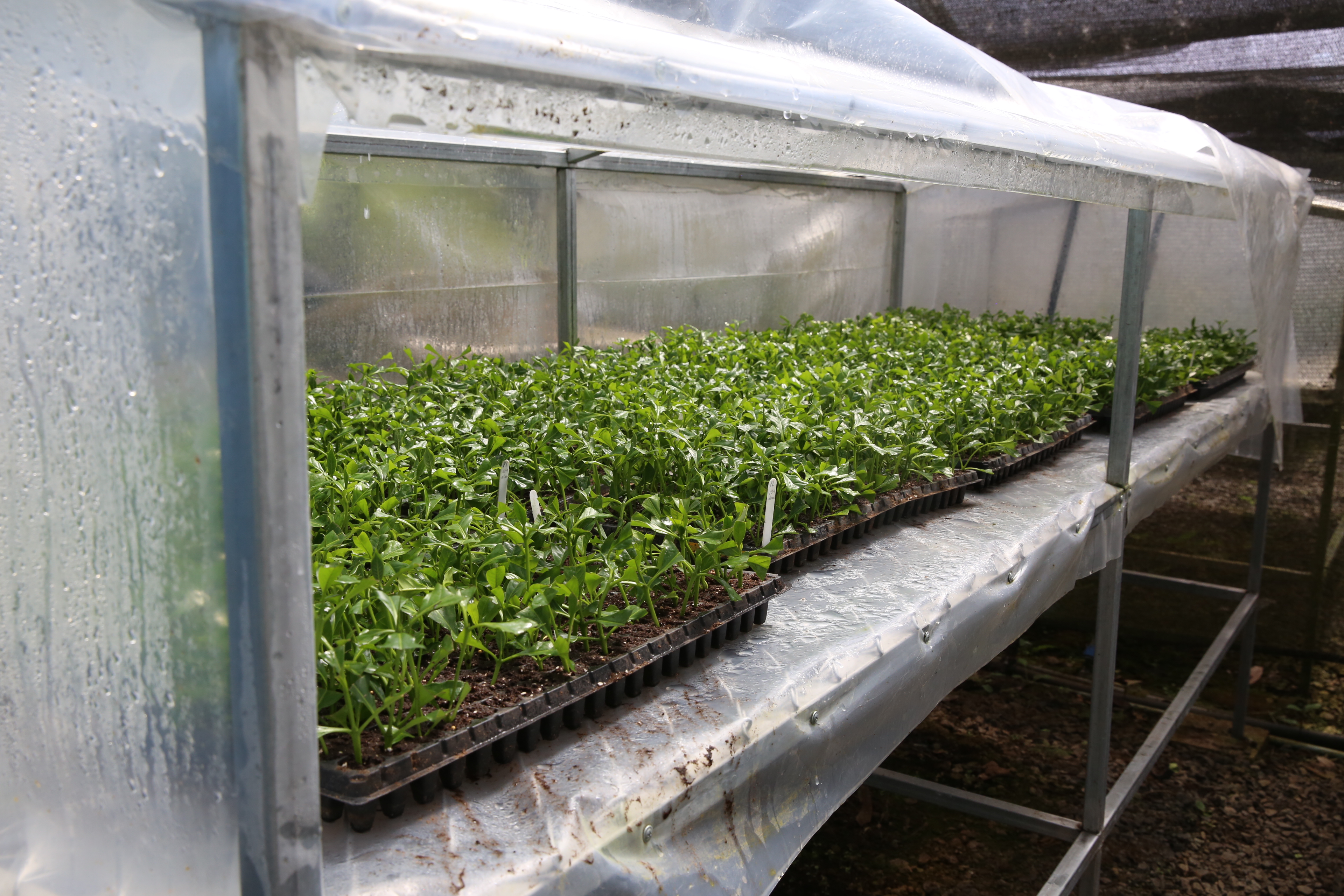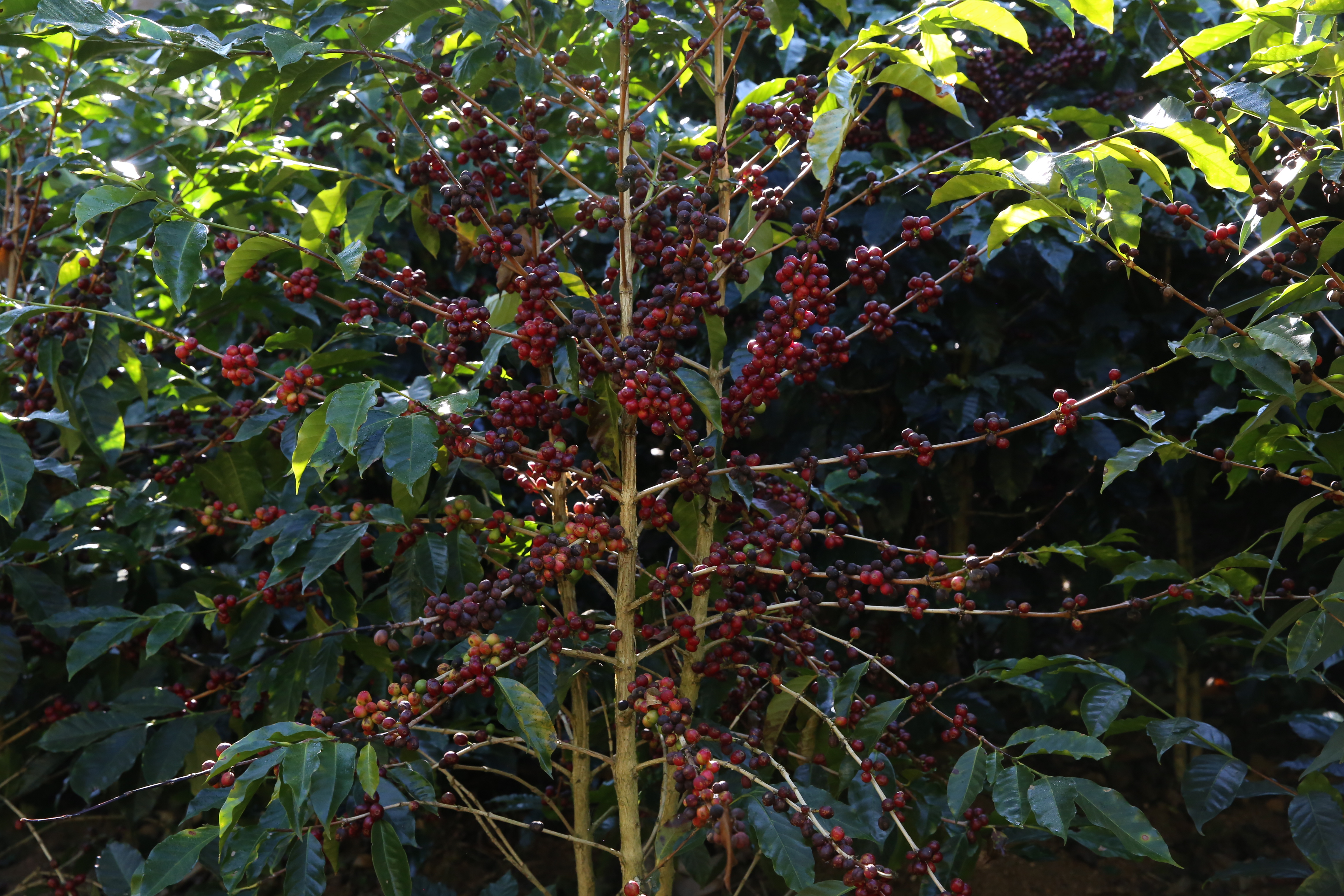-
In March 1949, a group of experts started a special kind of coffee plantation on the land of the Tropical Agricultural Research and Higher Education Center (CATIE) at Turrialba, in the center of Costa Rica. They planted 23 different types of coffee trees collected from El Salvador, Guatemala, and Costa Rica. It was the beginning of one of the most important collections of coffee diversity in the world.
-
SEVENTY YEARS ON, A GLOBAL GARDEN KEEPS THE COFFEE HOT, PART 1
Text by Paul Cox, Scriptoria for #CropsInColor
Photography*, video and additional reporting by LM Salazar
-
Today, the CATIE collection consists of almost 2,000 types of domesticated and wild coffee, maintained in close rows of trees on ten hectares of land. They have been assembled over the decades from Ethiopia, Yemen, Kenya, Tanzania, Colombia, Brazil, Mexico, and all over Central America.
-
Eleven species are represented, but 90% of the plants belong to Coffea arabica, which accounts for most of the world’s cups of coffee, and the most prized.
-
THE PAST:DIVERSITY AND DISCOVERY
-
Not every bean from every tree in CATIE’s collection will make a good cup of coffee. But all of them are critically important. “The diversity hosted here is the foundation for genetic improvement of coffee for Central America and beyond,” says William Solano, curator of the collection.
-
In the early days, improvement focused on one thing: resistance to a devastating fungal disease called coffee leaf rust, the coffee farmer’s greatest foe. In the 1960s, CATIE began distributing a few new rust-resistant varieties through national institutes in Central America. These became the parents of nearly all rust-resistant commercial coffee varieties grown in the region.
-
But with an ever-evolving disease like leaf rust, resistance doesn’t last forever. New strains of the fungus can infect previously safe plants and once again sweep through the region, causing havoc. By the 1990s, breeders understood that overcoming the menace was not as simple as bringing one or two new resistant varieties to Central America.
-
“What history tells us is that when coffee first came to America, it was fewer than ten plants,” Solano explains. “This made the genetic base of Latin American coffee farms very narrow, very limited. We had to make use of the diversity in our collection to fix that, before it was too late.”
-
In a collaboration with two other institutes, PROMECAFÉ (Regional Cooperative Program for Technological Development and Modernization of the Coffee Sector) and CIRAD (The French Agricultural Research Centre for International Development), CATIE started a breeding program to diversify Central American coffee in the 1990s.
-
Bringing wild coffee from Africa into the mix, they selected 20 highly productive and disease-resistant hybrids for Central America’s farmers.
-
In the 1990s, coffee was in the midst of a worldwide revolution, and breeders were not yet aware of just how big a change was coming. Suddenly, a cup of coffee was not just a cup of coffee. Customers to the north started to care about what they were drinking – very, very deeply.
-
The specialty coffee revolution meant that farmers could tap into a much more lucrative marketplace, if only they could produce a stunning flavor and aroma. Coming at a time of price volatility, this challenge was enthusiastically met by producers.
-
This culminated in the 1999 launch of the Cup of Excellence, the highest award bestowed by the coffee industry. Small farms like Sumava, in the West Valley of Costa Rica, now regularly win this award with beans that trace their origin to CATIE’s collection and breeding program. Their coffee swept the 2016 competition with one of the hybrids developed in the 1990s.
-
Yet the most celebrated coffee in the region has a longer story. A plant called Geisha was originally collected from a forest in Ethiopia in the 1930s; after growing in collections in Kenya and Tanzania, it found its way into CATIE’s garden in 1953. As it seemed to be rust-resistant, CATIE distributed the variety around Latin America in the 1960s.
-
In Panama, farms from the Boquete region planted the Geisha trees, but given its low productivity, many producers largely forgot about them. Decades later, at Hacienda La Esmeralda, something magical happened: in this particular high-altitude environment, with its volcanic soils and balanced rainfall, Geisha produced a unique, spectacularly aromatic coffee.
-
Price Peterson and his family, who now own the farm, did not realize this until 1999, when a worker happened to try the cherries from one of the trees while visiting the overgrown plot. After brewing and tasting the coffee, the Petersons immediately planted more trees and entered Geisha in the Best of Panama competition (a national version of the Cup of Excellence) in 2004, where it took the place by storm.
-
Suddenly, Geisha was on everyone’s lips. Other farms began planting it in different locations around Central America to experiment with the complicated interplay of environment and genetics.
-
In 2018, this long-obscure release from the CATIE collection was still reaching new heights. At that year’s Best of Panama auction, one batch sold for a wholly unprecedented price of USD 803 per pound.
-
The size, diversity, and past successes of the CATIE coffee collection make it vitally important to the industry in Central America.
-
Starting in 2006, after CATIE signed an agreement to place its collections under Article 15 of the International Treaty on Plant Genetic Resources for Food and Agriculture (ITPGRFA), this diversity is now available to coffee farmers and drinkers all over the world.
-
“As the only coffee collection presently included in the Plant Treaty, this is the only coffee diversity that is available for distribution globally under facilitated conditions, and will always remain open for the diversification and improvement of all coffee, across the 80-plus countries where the crop is grown,” says Kent Nnadozie, Secretary of the ITPGRFA.
-
Today, the Plant Treaty ensures that the diversity conserved here will be shared as a global public good. With support from the Crop Trust, detailed information for every type of coffee in the collection are now available online through the Genesys platform.
-
Says Solano, “all the germplasm is available to any user – a producer, a research center; we are obliged – and happy – to share it.”
-
If the CATIE collection stands, today, as a global public good, how can the coffee world put it to use?
That effort is actually well under way.
-
Stay tuned for PART 2 of our #CropsInColor story celebrating 70 years of CATIE’s international coffee collection.
-
#CropsInColor celebrates the critical importance of crop diversity and its beauty and cultural relevance across different landscapes. It highlights many key actors in our food systems – from consumer to farmer to seed bank – who are doing their part in safeguarding, making available and using crop diversity.
#CropsInColor is made possible by the generous support of Corteva Agriscience.
-
The Crop Trust and WCR estimate it will cost about USD 1 million a year to support the most important collections. An endowment fund of USD 25 million, paying out 4% per year, would provide that ongoing funding forever, without the need to scrape together funding year to year. The Crop Trust and WCR will now work to find funding for the Crop Trust Endowment Fund to ensure secure funding for the coffee collections, forever.
Invest today in the future of coffee. If 25 million people (out of the 7.5 billion worldwide) donated just a dollar, coffee would be safe forever.

